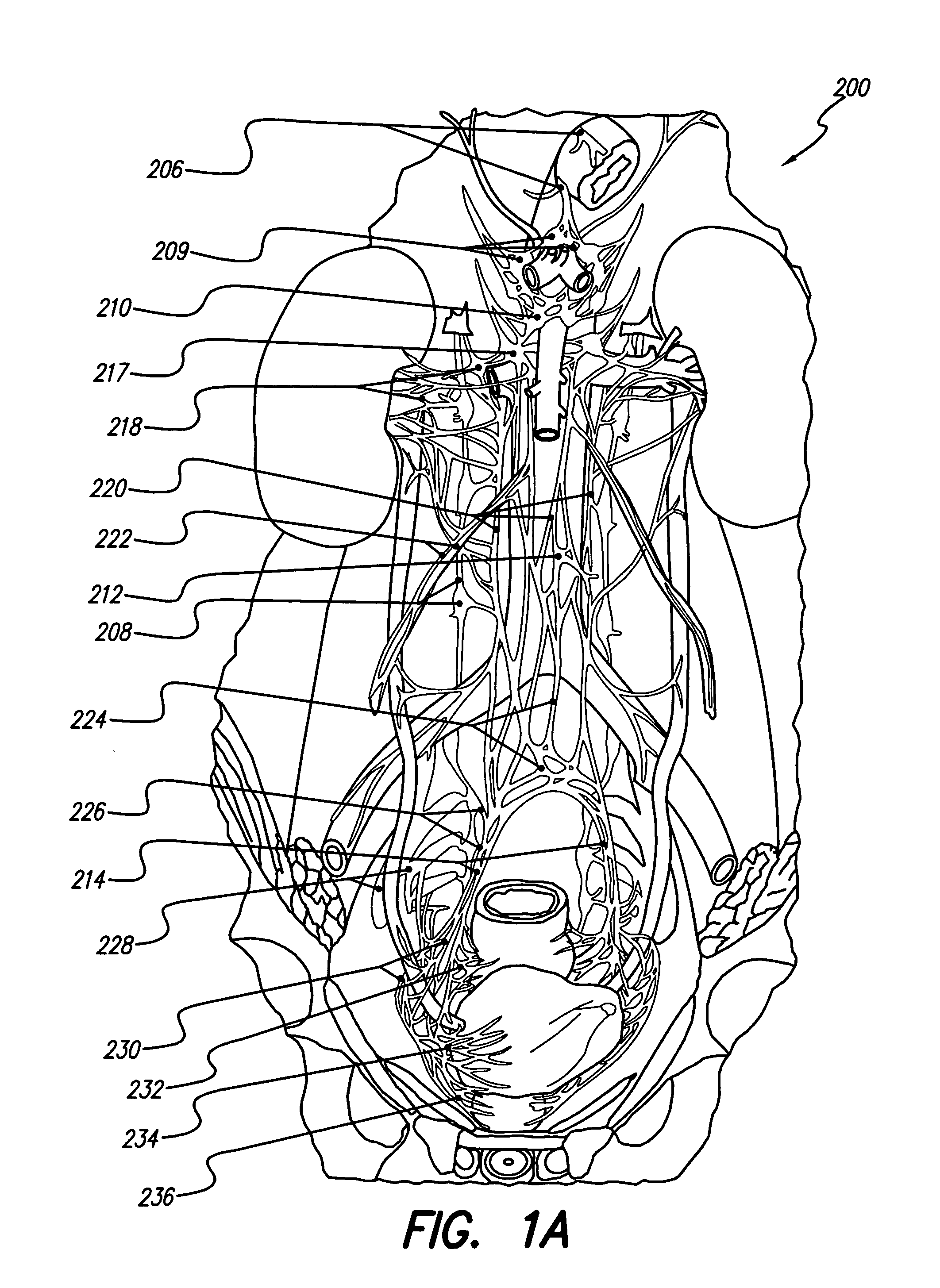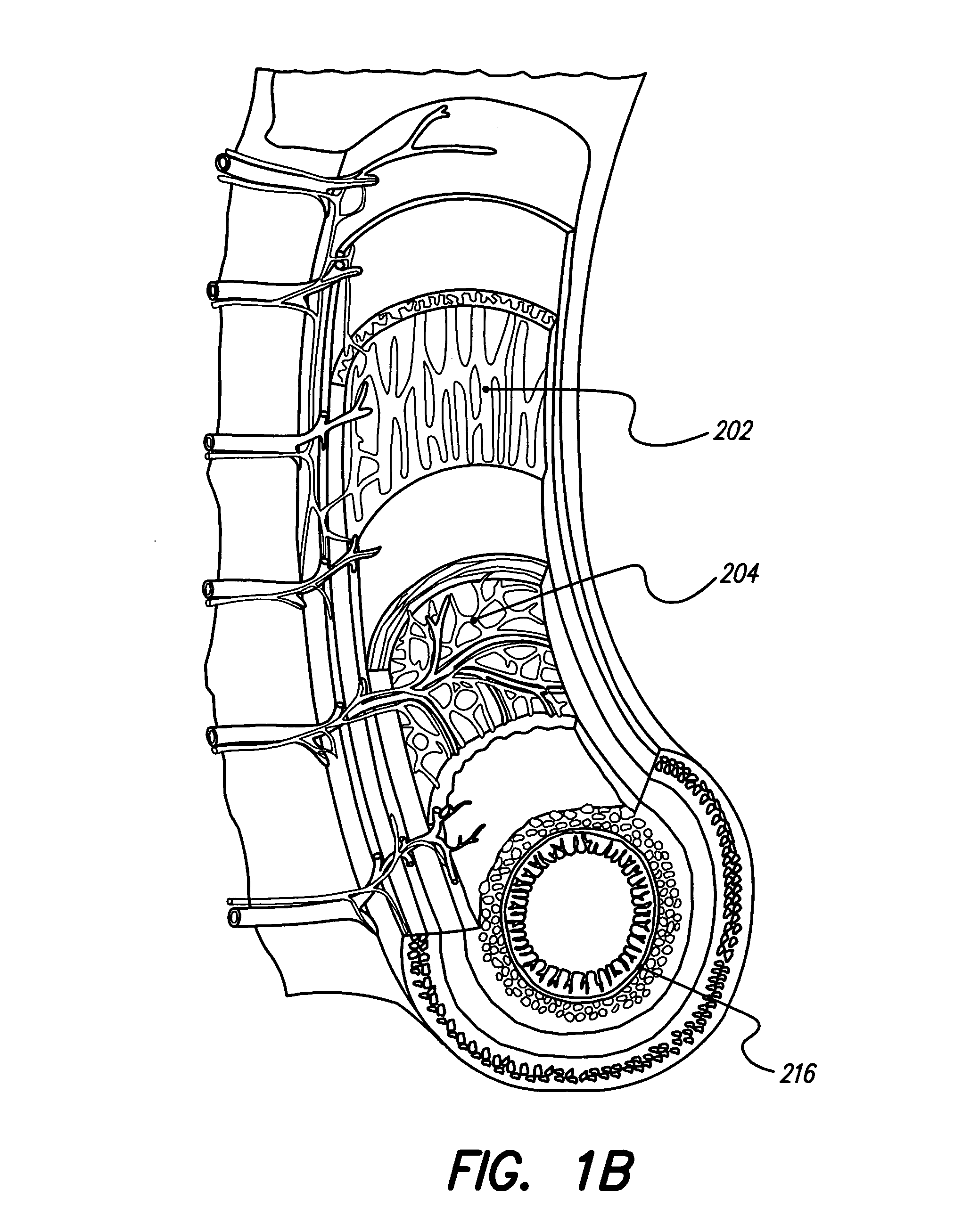Methods for treating gastrointestinal disorders
a technology of gastrointestinal disorders and methods, applied in the field of gastrointestinal disorders, can solve the problems of duodenal ulcers, insufficient relaxation, and dysfunction of les, and achieve the effect of reducing muscle activity and increasing neural and/or muscle activity
- Summary
- Abstract
- Description
- Claims
- Application Information
AI Technical Summary
Benefits of technology
Problems solved by technology
Method used
Image
Examples
Embodiment Construction
[0060]The following description is of the best mode presently contemplated for carrying out the invention. This description is not to be taken in a limiting sense, but is made merely for the purpose of describing the general principles of the invention. The scope of the invention should be determined with reference to the claims.
[0061]Turning first to FIGS. 1A and 1B, a miniature implantable microstimulator 100 (e.g., a BION® microstimulator as shown in FIG. 4A) may be implanted via a minimal surgical procedure (e.g., injection via endoscopy such or small laparoscopic incision) adjacent to a portion of the enteric nervous system 200 to treat GI disorders, specifically to treat gastrointestinal motility disorders, sphincteric disorders, and eating disorders by stimulating the areas that include a portion of the myenteric plexus 202, a portion of the submucosal plexus 204, a branch of vagus nerve(s) 206, the sympathetic pelvic plexus 208, one or more of the sympathetic plexuses (i.e.,...
PUM
 Login to View More
Login to View More Abstract
Description
Claims
Application Information
 Login to View More
Login to View More - R&D
- Intellectual Property
- Life Sciences
- Materials
- Tech Scout
- Unparalleled Data Quality
- Higher Quality Content
- 60% Fewer Hallucinations
Browse by: Latest US Patents, China's latest patents, Technical Efficacy Thesaurus, Application Domain, Technology Topic, Popular Technical Reports.
© 2025 PatSnap. All rights reserved.Legal|Privacy policy|Modern Slavery Act Transparency Statement|Sitemap|About US| Contact US: help@patsnap.com



